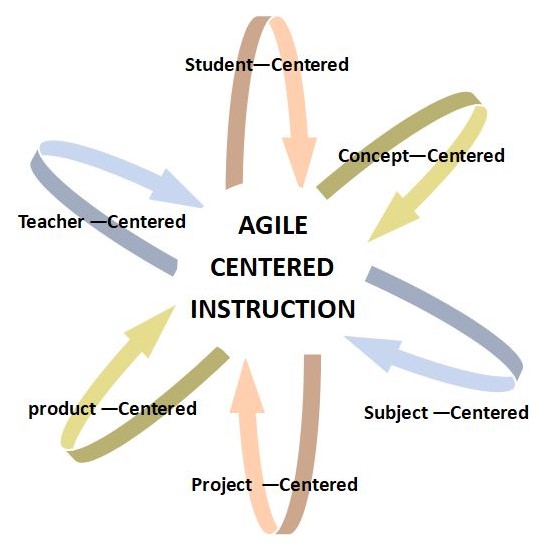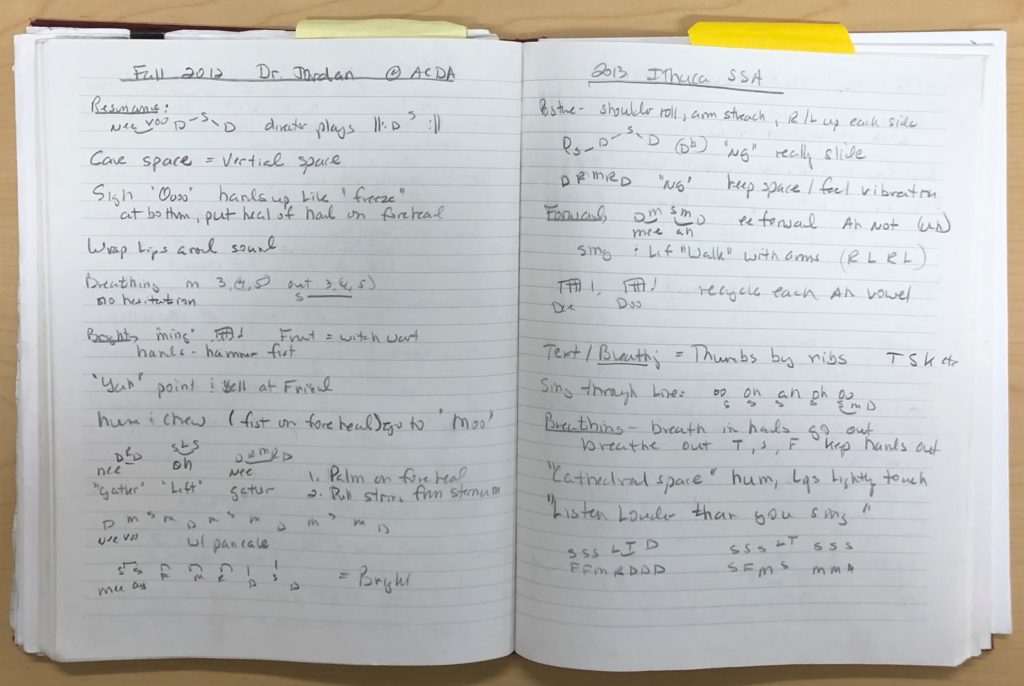Marked by ready ability to move with quick, easy grace – an agile dancer.
Having a quick resourceful and adaptable character – an agile mind.
Identified by flexible and varied instruction – an agile educator.
At the beginning of teaching online, I became acutely aware that my students were struggling due to their reliance upon, and interactions with, the structure of the school. So was I. It became clear that we felt a loss and missed the interactions that we experienced throughout the school day. The connections we made in the classroom, talking in the hall, meetings before school, rehearsals after school, and gathering during lunch grounded and defined the total school learning experience.
School Learning Experiences
I realized that the school learning experience resembles my teaching, in that what grounds and defines my music program is not one specific methodology or event. But instead, it is the interaction within the classroom learning environment, the variety of learning experiences, and the relationship between the student and subject.
Our school learning structure at Marcellus High School is not solely subject-centered, or schedule-centered, or social-centered, or staff-centered, or student-centered, or building-centered. It is the interplay of all the above. It is student-community-centered.
My classroom is not exclusively student-centered, or subject-centered, or teacher-centered, or performance-centered, or concept-centered, or product-centered. It is the diverse interaction of all the above. It is agile.

The Classroom Learning Environment
In previous blogs, Leading Voices challenges readers to reflect on their teaching through Self-Generation, Seeing with New Eyes, Teaching Out Loud, and Reimagining and Improving Instruction. An agile educator attempts to become aware of teaching habits in the classroom, and are mindful of their curricular and pedagogical preferences.
One teaching habit I fall into is using the same warm-up/focus exercises to get the students’ attention as begin class. (I wonder when I will be able to add lip trills back into warm-ups? Actually, I wonder when I will have in-person rehearsals with warm-ups again?).
Throughout the year, I catch myself defaulting to a few of my favorite warm-ups with my choirs – I can go on vocal warm-up autopilot. These standard exercises are successful and tried and true, but at times, they can be limiting. For this reason, many years ago, I created a vocal warm-up and vocal strategy notebook. This notebook contains warm-up ideas from attending choral festivals, reading journals and blogs, and exercises I learn and borrow from my colleagues.

Agile Centered Instruction is like my warm-up notebook. I need to periodically remind myself to vary instruction and change up my teaching strategies, Sometimes student-centered, sometimes teacher-centered. Sometimes rote teaching, other times having the students initiate a discipline (The Paradox of Learning).
The Relationship Between Student and Subject
Agile Centered Instruction is adaptable, resourceful, fluid, and purposeful. It is based on the praxial philosophy and uses a praxis-based curriculum as defined by David J. Elliott in his book, Music Matters.
“praxis connotates action that is embedded in, responsive to, and reflective of a specific context of effort.” (emphasis added)
The praxis-based curriculum focuses on doing and purposeful action in music education. As the student grows in skill and understanding through the technical and musical demands, so does their ability to comprehend and perform more realistic real-life musical experiences. As a student interacts with the praxis-based curriculum, he/she moves towards a more independent level of learning regardless of their present skill, and a new strengthened model of understanding is acquired.
The implementation of a praxis-based curriculum is simply not a matter of actively building new skills, but rather it strengthens the connections between actions, purpose, and understanding. As a result, the students’ learning effects and changes future music instruction and the classroom environment. Throughout this interaction, the changes in student understanding necessitate new responses and adaptations from the teacher by adapting and modifying instruction. (adapted for teaching from Silsbee, 2008, p 239)
The interaction and dialogue between the teacher, student, and learning process create a learning environment that requires the instruction to be fluid, varied, and agile. Agile Centered Instruction, supported by the praxial philosophy, presents a holistic classroom environment that promotes a culture of learning and musical growth, creating The Agile Classroom.
A Variety of Learning Experiences – The Agile Classroom
- Encourages student inquiry and active problem-solving.
- Develops students’ ability to plan, create, and evaluate.
- Supports collaboration, self-monitoring, and accountability.
- Enhances the quality of student participation and performance.
- Promotes collaboration through shared group understanding and recognition of collective action.
The Agile Development Instructional Framework (ADIF) establishes the foundation for the Agile Classroom. Agile centered music instruction is based on a tradition of excellence that meets the student at their current skill level, empowers individual learning, and helps students actively connect with music at a deeper level.

The Agile Classroom: PMEA Research Poster Presentation, Abstract, and Applications
How do we actively engage students in lifelong music learning and participation?
1. By becoming aware of our teaching and instructional habits in the classroom.
2. By teaching, thinking, questioning, and searching out loud.
3. By reimagining music instruction
4. By incorporating Agile-Centered Instruction
Conclusion: Agile Centered Instruction
The structure of school and the connections within the school learning experience offer valuable insights on how we, as a profession, can successfully bridge the gap between pre and post COVID-19 music instruction. The strength of any school, classroom, or music program is in the interplay and collaboration between all components – it is not based on one specific methodology or event.
The interaction and interchange between all elements in music instruction: student-centered, subject-centered, teacher-centered, performance-centered, concept-centered, product-centered, is the foundation of good teaching and the Agile Centered Classroom.
“Tell me, and I forget,
teach me, and I may remember,
involve me, and I learn.”
Xun Kuang, Chinese Confucian philosopher
References:
Elliott, David J. Music Matters: a New Philosophy of Music Education. Oxford: Oxford University Press, 1995.
Regelski, Thomas “Implications of aesthetic versus praxial philosophies of music for curriculum theory in music education.” Didacta Varia, Vol. 8/1 (2003); 63-92; Helsinki University, Finland, Faculty of Education.
Silsbee, Douglas K., and Richard Strozzi-Heckler. Presence-Based Coaching: Cultivating Self-Generative Leaders through Mind, Body, and Heart. San Francisco, CA: Jossey-Bass, 2008



Leave a Reply
You must be logged in to post a comment.